Tiki Barber, the Giants' all-time leading rusher, is the latest star to consider a return from retirement. Who are the greatest athletes to have un-retired? The Top 5 is tough to crack, but their returns could provide helpful lessons for Barber.
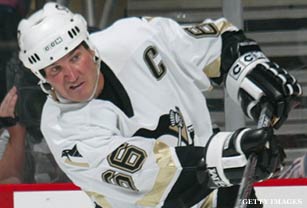
No. 5 Mario Lemieux
After his 1997 retirement, Super Mario remained close to the Penguins organization and eventually helped the team during times of financial trouble by buying it. He went even further in 2000, when he became the third NHLer to return to the ice after being inducted into the Hall of Fame. Lemieux had a goal and two assists in his first game back and led the league in points per game that season. In fact, he had the highest points-per-game average during the entire second run in the NHL (2000-2006). He also won an Olympic gold medal with Canada in 2002. As an owner, he helped Sidney Crosby ease into life in the NHL by letting him stay at his house. If Barber wants to embrace the role of mentor in his return, he should look at Lemieux for a good example.
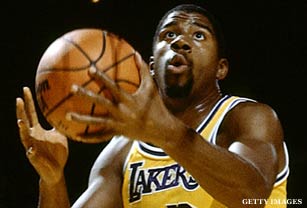
No. 4 Magic Johnson
Magic and Tiki have a lot in common. Magic was 32 when his HIV-positive status forced him to retire. Barber was 31 when he decided he had enough of his coach and the physical toll of the NFL. Both became TV commentators after retiring, but neither earned rave reviews for their work in front of the camera. Both sat out four seasons before deciding to come back. Magic said he wanted to help raise awareness of HIV and go out on his own terms. Barber has said his motivation is the challenge of achieving success again, but many suspect that he needs money after a divorce. One major difference is that Magic returned to the Lakers. We can't see Barber going back to the Giants after he burned bridges by criticizing Eli Manning and Tom Coughlin.
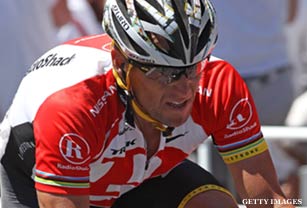
No. 3 Lance Armstrong
Armstrong actually returned from retirement twice. His first retirement was because of testicular cancer. He beat the odds by returning to professional cycling and then surpassed everyone’s wildest dreams by winning an unprecedented seven Tour de Frances. At the top of his game, he retired again to spread cancer awareness full time. In 2008, he decided that his efforts would be more successful if he returned to the bike. While he was not as successful on the pavement, his return to cycling added millions of dollars to his charity and helped to keep cancer awareness in the news. Overall, his second unretirement hardly hurt his legacy. But his reputation has been damaged by repeated accusations of doping, most recently by former teammate Floyd Landis, and an ongoing government investigation.
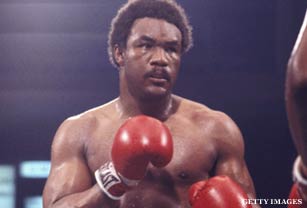
No. 2 George Foreman
Ten years after what would have been the end of a successful career, Foreman shocked the boxing
world in 1987 by announcing he would return to the ring at the ripe old age of 38. He gave a number of reasons for the return, including raising money for a youth center and regaining the championship belt he had lost 14 years earlier. His most critical goal was beating Mike Tyson. After Tyson lost his title to Buster Douglas, there were plans for a Foreman-Tyson bout but it never took place with many suspecting that Tyson wanted no part of the aging but still powerful Foreman. In that one respect, his return was a failure. But in 1994, at the age of 45, he became the oldest world heavyweight champion by knocking out 26-year-old Michael Moorer. Foreman proved that age was no barrier and neither was his love of cheeseburgers as he was happy to tell the world when hawking his now famous grill.
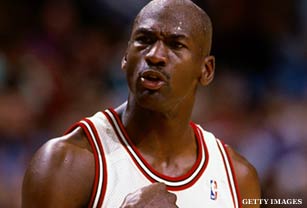
No. 1 Michael Jordan
Jordan actually did the unretirement thing twice. His first retirement was in 1993 after the death of his father. Jordan then spent two years trying to cut it in minor league baseball. He announced his return to the Bulls -- listen up here, LeBron -- with a press release that simply said, “I’m back.” In Jordan's first full season back in the NBA, the Bulls went 72-10 in the regular season, a record that still stands. They breezed through the playoffs to win the title, then backed up that performance with two more championships, completing Jordan’s second three-peat. He retired again at the top of his game in 1999 and joined the Washington Wizards as a part-owner and executive. Then he tried to light the match again in 2001, signing a two-year contract with the Wizards for the league minimum and later pledging to donate his salary to relief effort after the 9/11 terrorist attack. Jordan averaged more than 20 points and turned the Wiz into the second most-watched NBA team. He could still score -- he posted 40 or more three times as a Wizard -- but was frustrated that the team never made the playoffs. He retired for good -- we think -- in 2003.
Roger Clemens: The Rocket was effective enough in the final years of his career to merit four unretirements. But shrouded by PED allegations, Clemens probably wishes he had chosen to fade into the sunset a couple years earlier.
Bob Cousy: Cousy decided to make a return to the court six years after a tearful retirement speech in Boston. Before he could become a player-coach for Cincinnati, the Royals had to complete a complex trade with the Celtics so that Cousy could be taken off Boston’s retired players list. It wasn’t worth the trouble as the 41-year-old played poorly in only seven games, although the Royals did well at the gate.
Brett Favre: It wouldn’t be a list about unretiring legends without a Brett Favre reference, so here it
is. The Gunslinger has retired more times than he has missed a game.
Sammy Sosa: After a year away from the game, Sosa was able to secure a roster spot on the Texas Rangers, his original MLB team, in 2007. He got just enough playing time to become the fifth man to reach 600 home runs. The milestone bomb came against the Cubs, the only team Sosa hadn’t homered against up to that point.
Martina Navratilova: Six years after retiring and in the same year that she was inducted into
the Hall of Fame, the Czech native returned to the court at the International Women’s Open. While she didn’t advance past the second round in that tournament, she won the mixed doubles titles at the Australian Open and Wimbledon in 2003, making her the oldest player to win a Grand Slam at 46 years and change.




